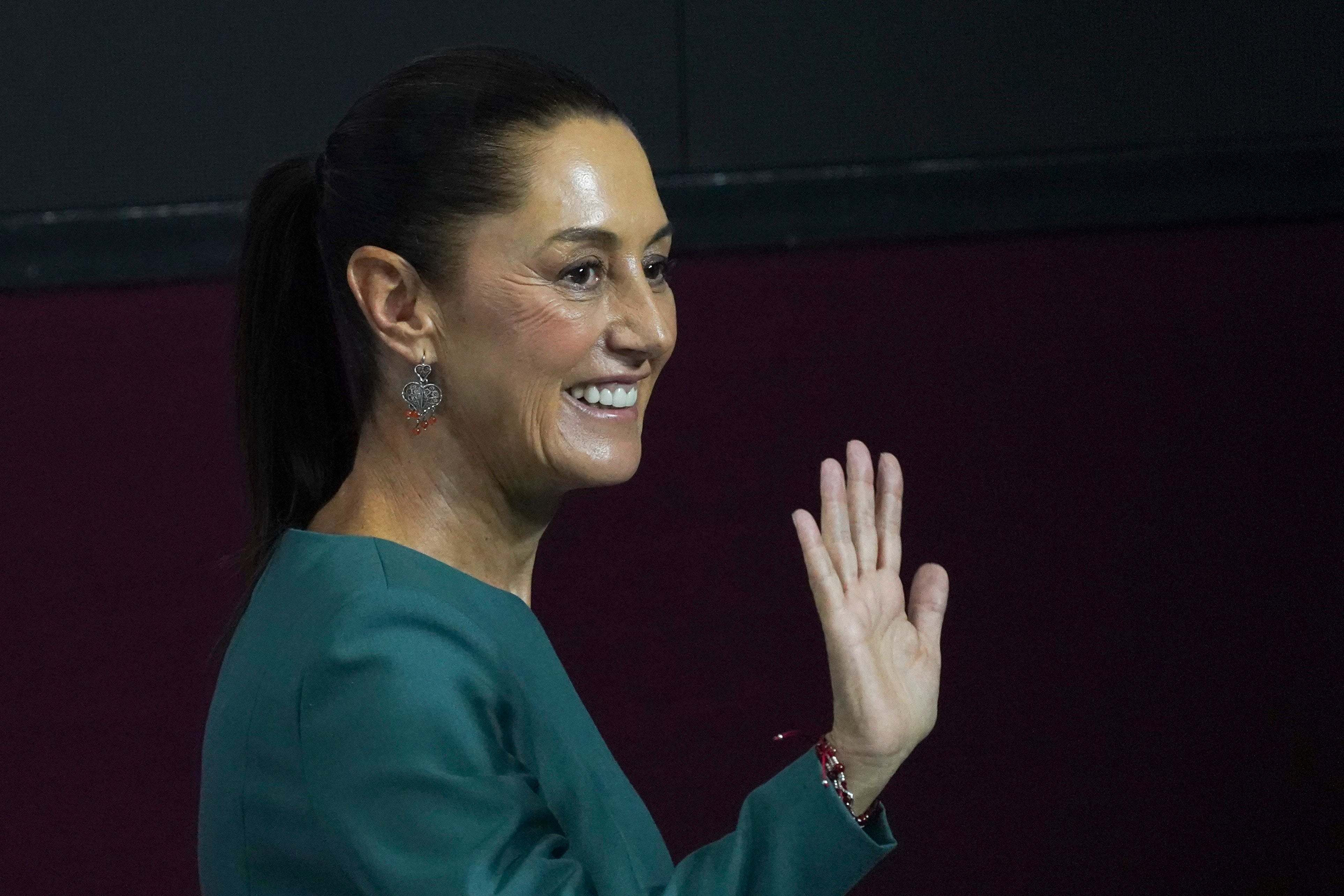Mexican president says his successor will build passenger train lines to US border
Mexico's president has announced that his successor is planning to build passenger train lines running from the capital to cities on the U.S. border

Mexico’s massive, debt-fueled passenger rail building program is not going to end with the administration of outgoing President Andrés Manuel López Obrador, but will instead double, he said Wednesday.
López Obrador said his successor, president-elect Claudia Sheinbaum, is planning to build three passenger train lines running from the capital to some cities on the U.S. border. López Obrador and Sheinbaum agree she will build about 1,850 miles (3,000 kilometers) of passenger rail, double the amount he built.
Sheinbaum said the trains would be electric and would run at speeds of up to 100 mph (160 kph). Almost all of Mexico's current freight trains run on diesel.
Sheinbaum said she was planning to build a passenger line from Mexico City to the border city of Nuevo Laredo — across the border from Laredo, Texas — a distance of about 680 miles (1,100 kilometers) at a cost of about $22 billion. However, the cost of most recent railway projects in Mexico have ballooned far above initial estimates.
Sheinbaum said she was also planning a train line from Mexico City to the western city of Guadalajara, for about another $3 billion, and said that rail line could be extended to border cities like Nogales, across from Nogales, Arizona, or other border cities further west if there was time in her six-year term.
Sheinbaum's plan will involve army engineers directing private contractors to build passenger lines along the same rights-of way currently used by private concessionary operators to move freight.
That could involve moving the existing rail lines to make way for the new tracks, which might mean some disruptions to current freight service if existing lines have to be moved.
López Obrador had previously demanded that freight line operators provide passenger service as well, but that plan has apparently been shelved.
López Obrador also acknowledged there could be big costs associated with confining the expected high-speed rail lines with walls or fences, and costs associated with recovering rights-of-way that have been invaded by squatters.
Current private concessionary rail operators said they had no immediate comment on the plans, or did not respond to requests for comment.
López Obrador said the project is expected to be nearly double the size of his own railway building programs, which included the $30 billion Maya tourist train on the Yucatan peninsula, a railway across the Isthmus of Tehuantepec linking the Pacific and Gulf coasts, and a commuter railway linking Mexico City to the nearby city of Toluca.
The cost of those railways has led López Obrador’s administration to post a budget deficit of nearly 6% of GDP this year, while experts question how much the trains will actually be used in a country where most travelers currently use cars, buses or airlines to cover the thousands of miles the routes involve.
Observers say one of the key problems is that López Obrador's rail lines — and apparently Sheinbaum's as well — have been planned with a “build it and they will come” attitude, with little real effort to identify whether there is enough demand to justify passenger service to far-flung border cities.
There is little passenger rail infrastructure in U.S. border cities to provide connections for any Mexican rail lines that might be built.
López Obrador and Sheinbaum both belong to the Morena party, and Sheinbaum was elected on a pledge to continue or expand all of López Obrador's policies.
The outgoing president has always said he regrets Mexico's decision to hand over the poorly-run national railways to private operators in the 1990s, when they largely dropped unprofitable passenger services.
But he also sees building rail lines as a way to create jobs and stimulate domestic growth.
“What does this mean?” López Obrador said. “Jobs, lots of jobs.”
___
Follow AP’s coverage of Latin America and the Caribbean at https://apnews.com/hub/latin-america
Bookmark popover
Removed from bookmarks